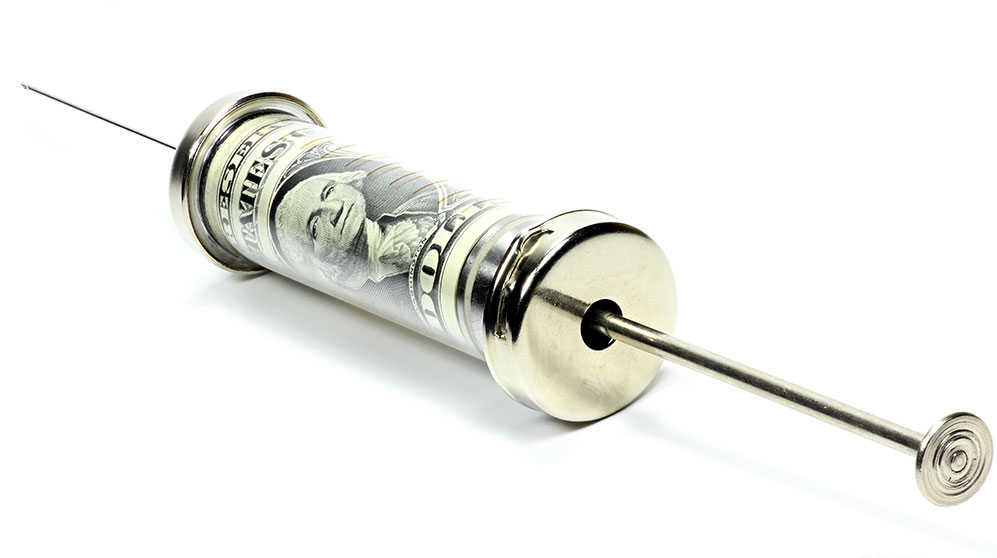Nascent Recovery Needs a Stimulus Shot – Soon
• 2 min read
- Brief: Global Economy

Get the latest in Research & Insights
Sign up to receive a weekly email summary of new articles posted to AMG Research & Insights.

The U.S. economic recovery remains fragile and could falter in the final months of the year without additional fiscal support. The real question is how big of a “steroid shot” does the economy need.
Congress and the White House have been wrangling over that issue for months, losing precious time and adding uncertainty to an already clouded economic outlook.
In March, as the COVID-19 pandemic engulfed the nation and prompted an economic shutdown, the government quickly enacted the CARES Act. The legislation provided $2.2 trillion in federal funding for extensions to state unemployment benefits, direct payments to individuals, and financial help for state and local governments, along with loans, grants and tax breaks for U.S. businesses. When recipients of federal aid increase their spending on goods and services, businesses ramp up production and hire more workers, increasing the much-needed economic growth. The newly hired workers also increase their spending, further fueling demand for production and output.
This time the government is considering proposals to offer additional fiscal support, most likely in the form of a second round of direct checks to households and resumption of enhanced unemployment insurance benefits. Other programs, such as additional aid to state and local governments and support for small businesses, also remain a possibility.
How much help do U.S. households need if their consumption expenditures—the economy’s engine—are to return to pre-pandemic levels by the middle of next year? AMG’s findings suggest that the requisite amount is likely lower than what was provided by the CARES Act.
Using the pre-COVID trend in disposable personal income and three indicative scenarios of how quickly households return to a normal rate of savings, AMG projects the federal government needs to inject between $333 billion and $534 billion to the household sector if disposable personal income is to regain its footing and enable consumption expenditures to again propel the economy onward.
Main takeaway for investors:
As the nation eagerly awaits a return to normalcy from the pandemic-induced paralysis, fiscal authorities have an important role to play in securing future economic growth and prosperity. AMG’s estimates indicate that a non-trivial stimulus could heal the economy’s remaining wounds faster, paving the way for self-propelled economic growth, improved investor sentiment and more robust capital returns.
This information is for general information use only. It is not tailored to any specific situation, is not intended to be investment, tax, financial, legal, or other advice and should not be relied on as such. AMG’s opinions are subject to change without notice, and this report may not be updated to reflect changes in opinion. Forecasts, estimates, and certain other information contained herein are based on proprietary research and should not be considered investment advice or a recommendation to buy, sell or hold any particular security, strategy, or investment product.
Get the latest in Research & Insights
Sign up to receive a weekly email summary of new articles posted to AMG Research & Insights.


